Innovative Research & Teaching Tool
Building the next generation of teaching and research tools
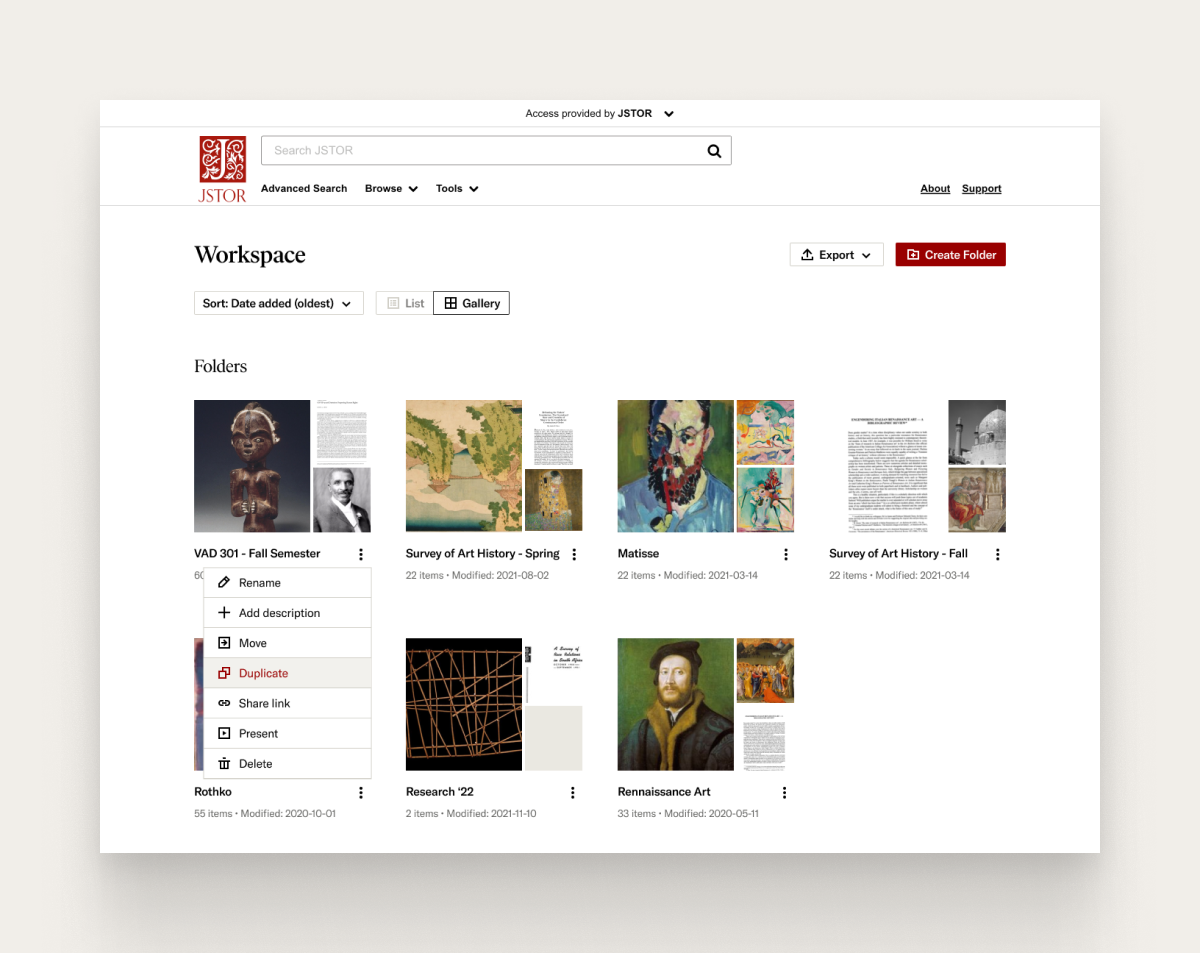
Overview
A shifting business model meant bringing together two disparate tools and user groups into one single, cohesive user experience.
Role
Product Designer
Responsibilities
UX Research, Interaction design, Visual design, Prototyping & Testing, Planning & strategy, Communication
Team
Design, Product Management, Engineering, QA, UX Research
Context
JSTOR, a leading academic research platform trusted by millions worldwide, was at a crossroads. The platform faced several challenges:
- Increasing accessibility of content through alternative sources threatened JSTOR's unique value proposition.
- Traditional business models were nearing saturation, calling sustainability into question.
- There was a pressing need for innovation to uncover new revenue streams and secure JSTOR's future.
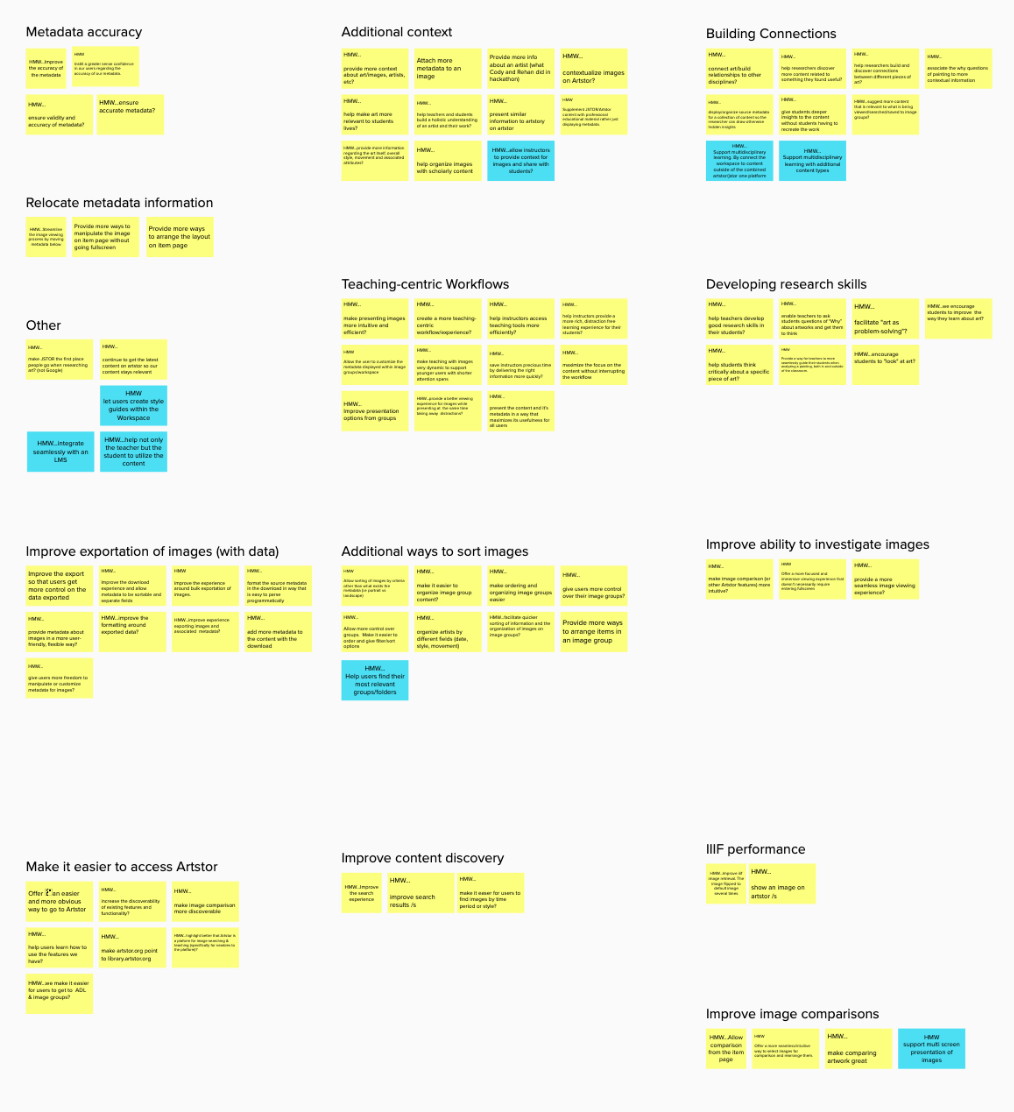
Team's came together to brainstorm how we might support the needs of both JSTOR and Artstor users.
Objective
Build a single research and teaching tool that supports JSTOR and Artstor users and workflows.
Why start with Artstor users?
There were several crucial reasons why this approach was essential:
- Retaining Artstor subscribers was vital for JSTOR's continued success.
- Artstor users were influential decision-makers in contract renewals.
- These users heavily depended on image groups for their teaching and research, making their needs a top priority.
- Previous setbacks meant it was imperative to deliver a flawless experience this time around.
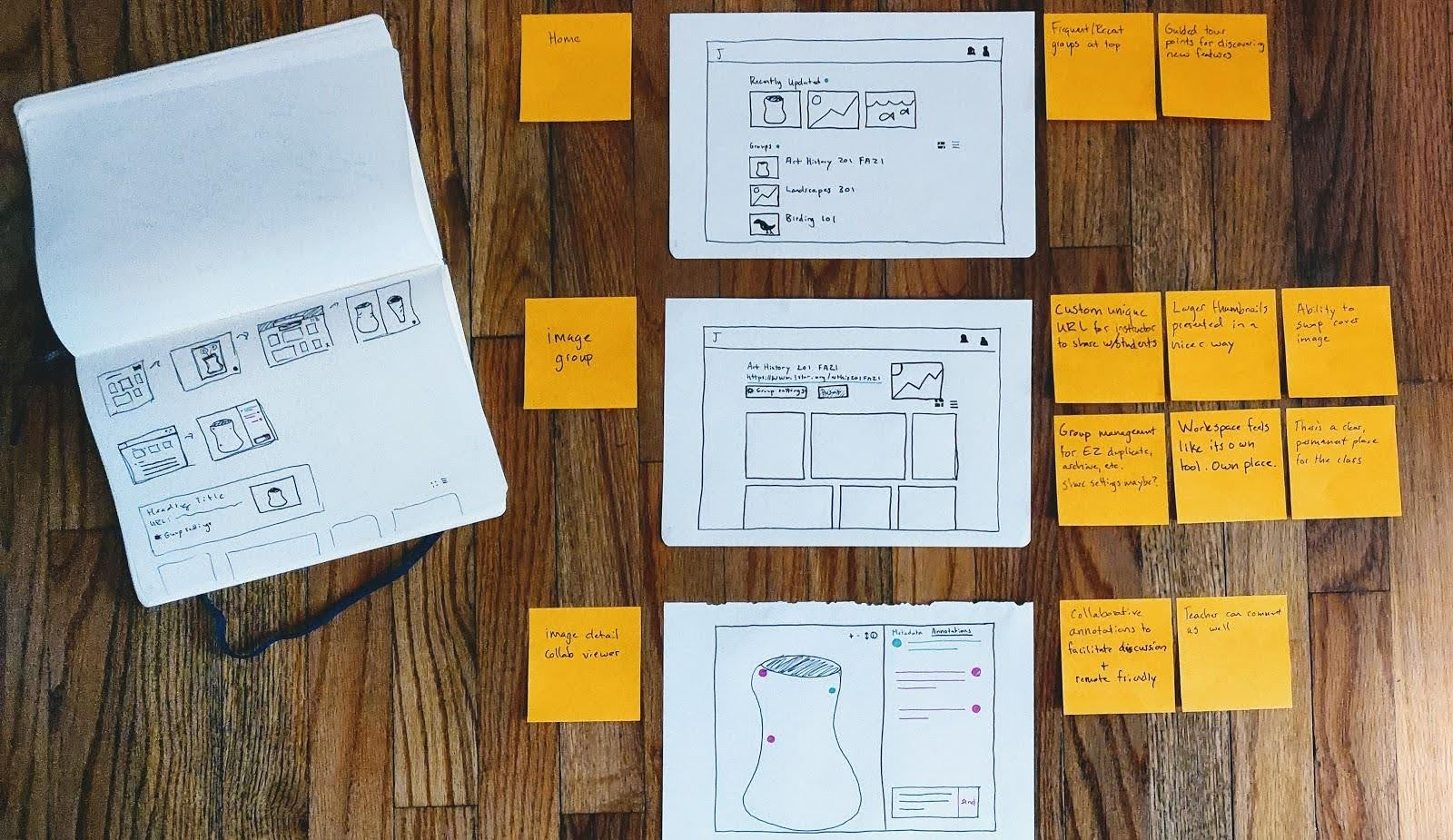
8-up activity to imagine a future research tool.
Constraints
The project involved several critical phases and challenges:
- Spent one quarter (Summer 2020) conducting research, defining the Minimum Lovable Product (MLP), and initiating development.
- Migrated millions of images, user accounts, and artifacts to a new, more robust platform.
- Tackled the project without initial backend team support, demonstrating adaptability and resourcefulness.
- Navigated the unexpected challenges brought by the COVID-19 pandemic 😷.
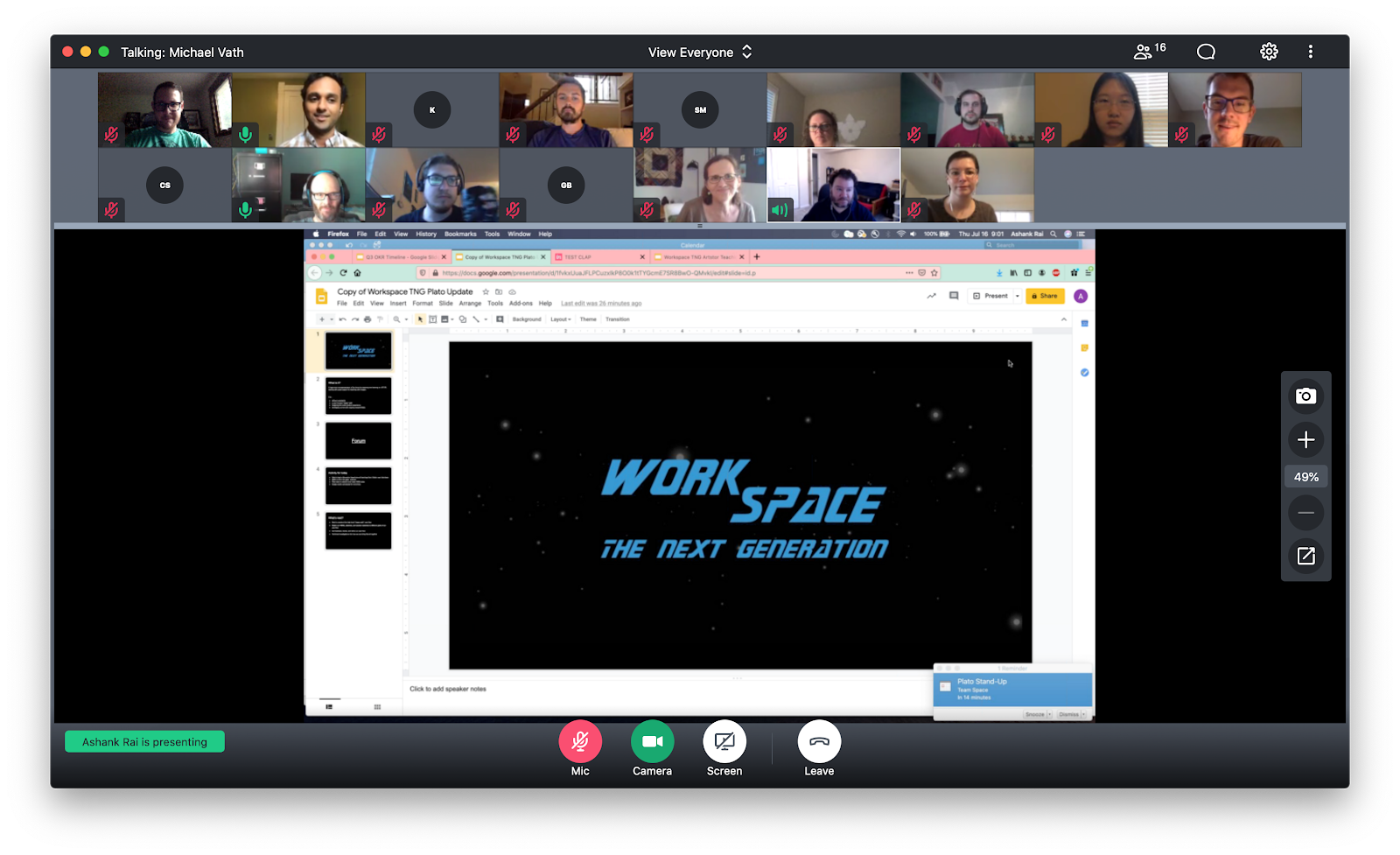
Our team met remotely with stakeholders to learn and share ideas.
Research
Activities
- Interviews with internal Artstor subject-matter experts (SME)
- Interviews with Artstor Users
- Artstor SME panel discussion
- Concept testing
Findings
Our research uncovered several key insights:
- Users were frustrated with features being removed and replaced with subpar alternatives.
- Organizing image groups on Artstor was found to be extremely tedious and time-consuming.
- Sharing image groups posed significant challenges for both faculty and students.
- Teaching art history is evolving, emphasizing the importance of connecting art with its historical context.
- Art professors were deeply invested in their image groups, and our platform was not meeting their high standards.
Original JSTOR Workspace
The original Workspace on JSTOR was built as a tool to enable researchers to save and organize text-based materials.
In addition to creating folders for organizing content, users could also add notes and export bibliographies.
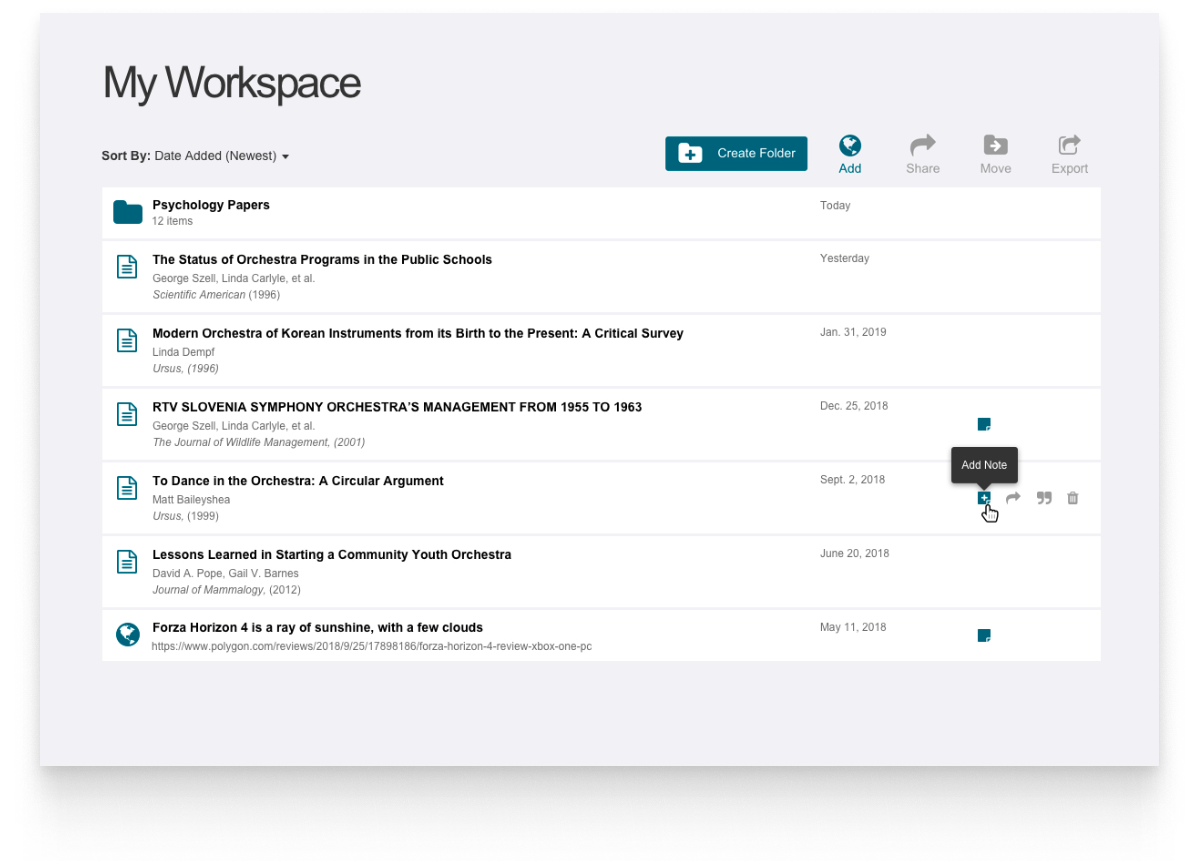
Original Artstor image groups
The Artstor workspace was a tool used by art historians and teachers to save and organize materials for teaching and research.
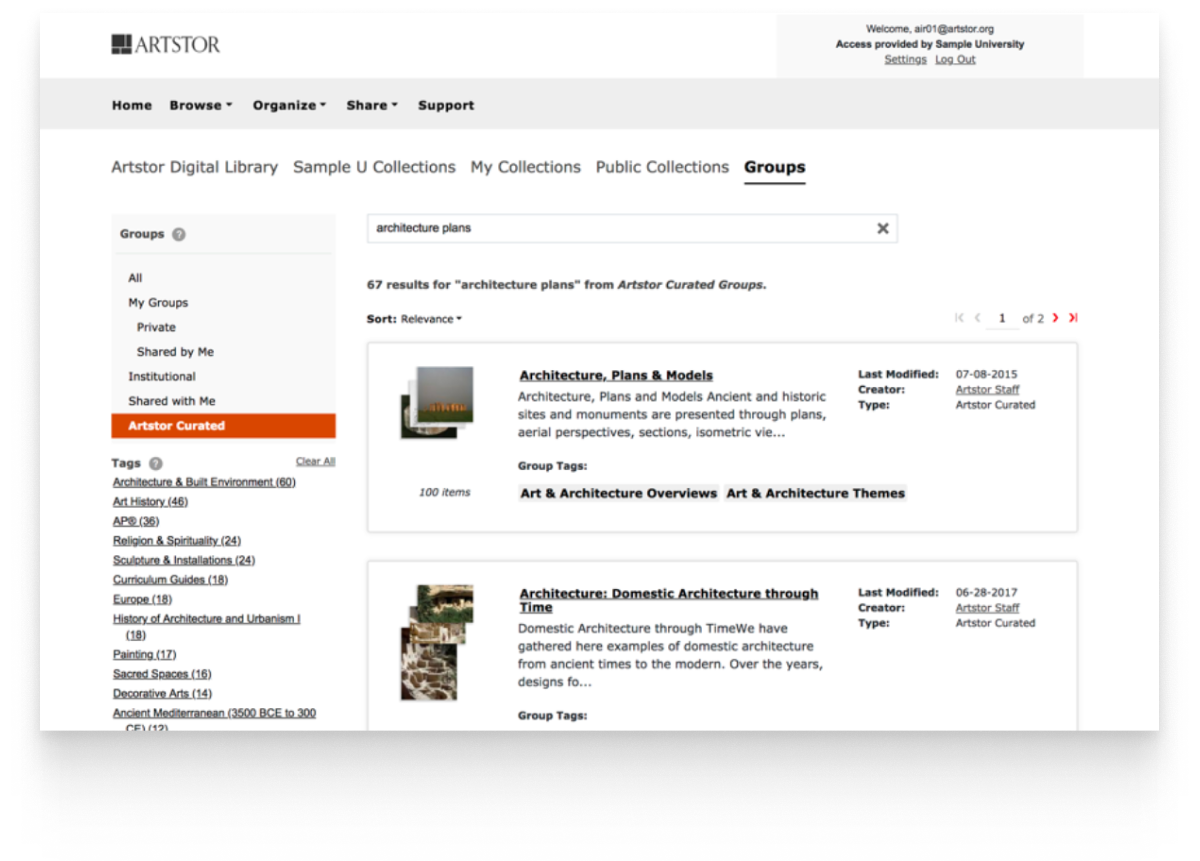
The messy middle
Lots of iterations, prototypes, and ideas that didn't stick.
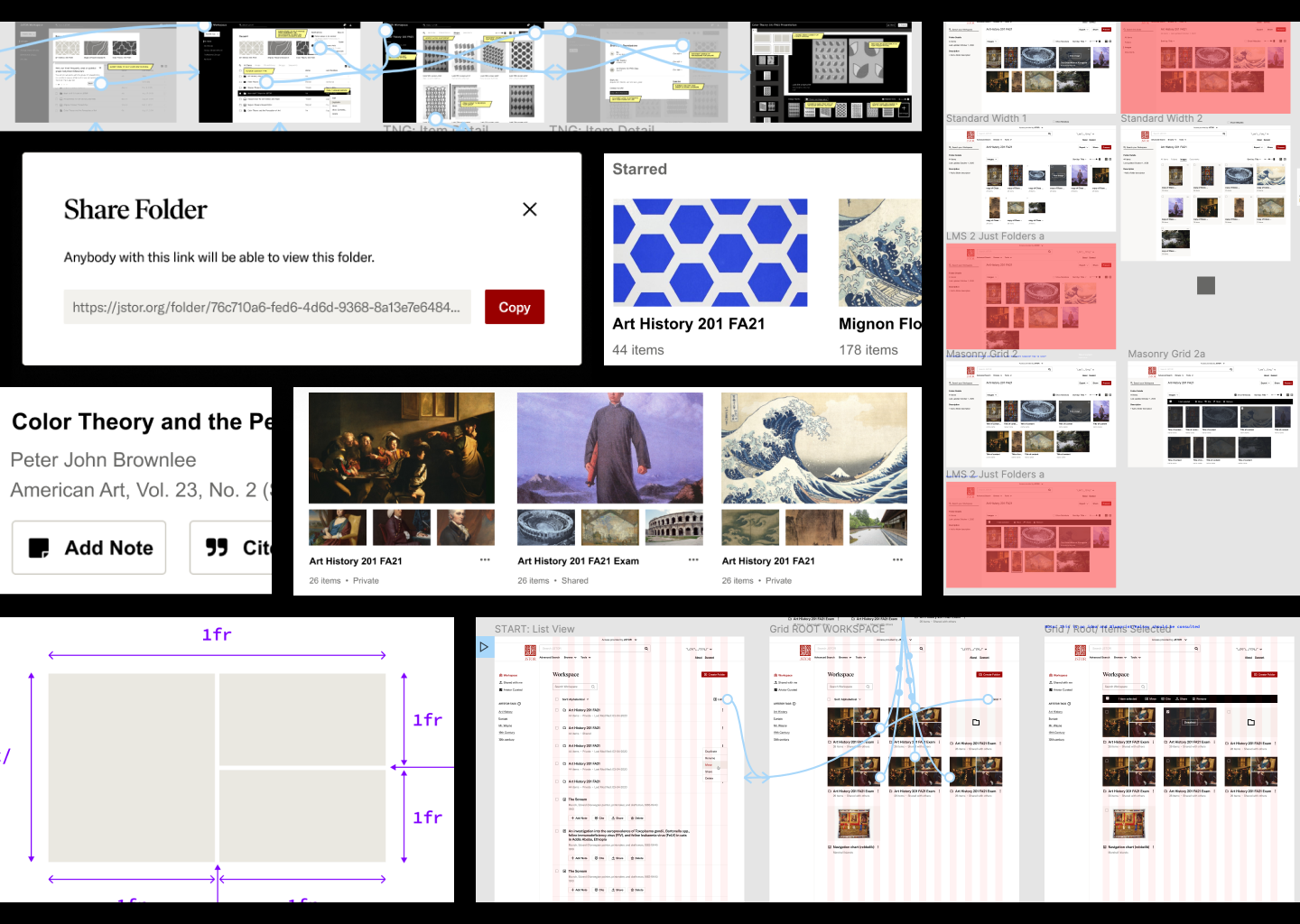
Solution
Objectives with this design
- Enhanced image group representation, celebrating content while improving recognition and discoverability.
- Implemented organizational tools like move, duplicate, delete, and rename for better content management.
- Introduced a sharing feature, requiring in-depth research to perfect user experience.
- Facilitated user workflows by enabling direct exports to their preferred tools.
